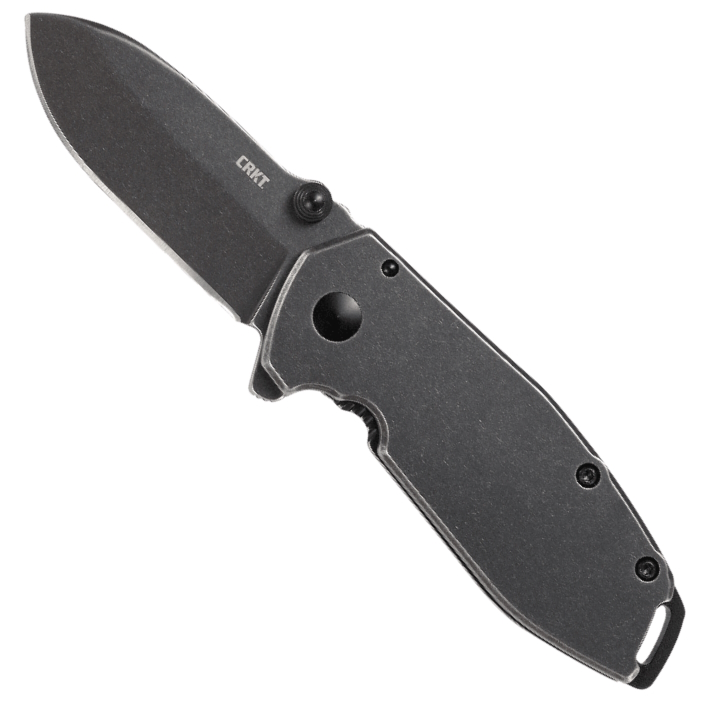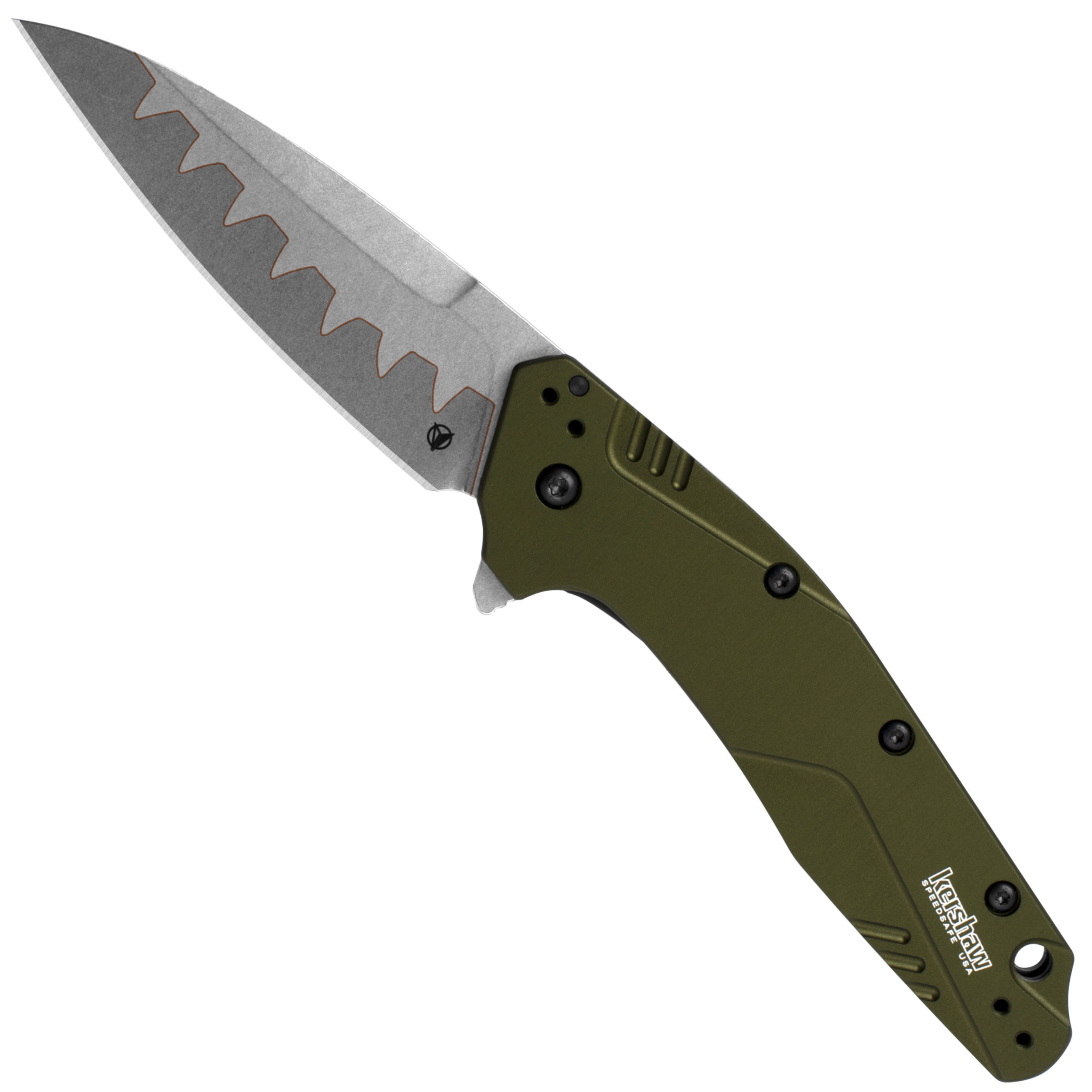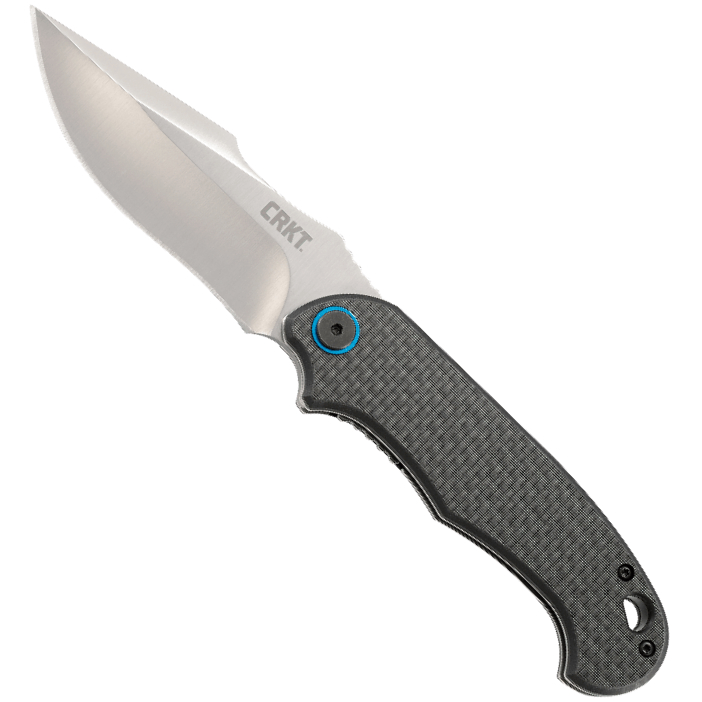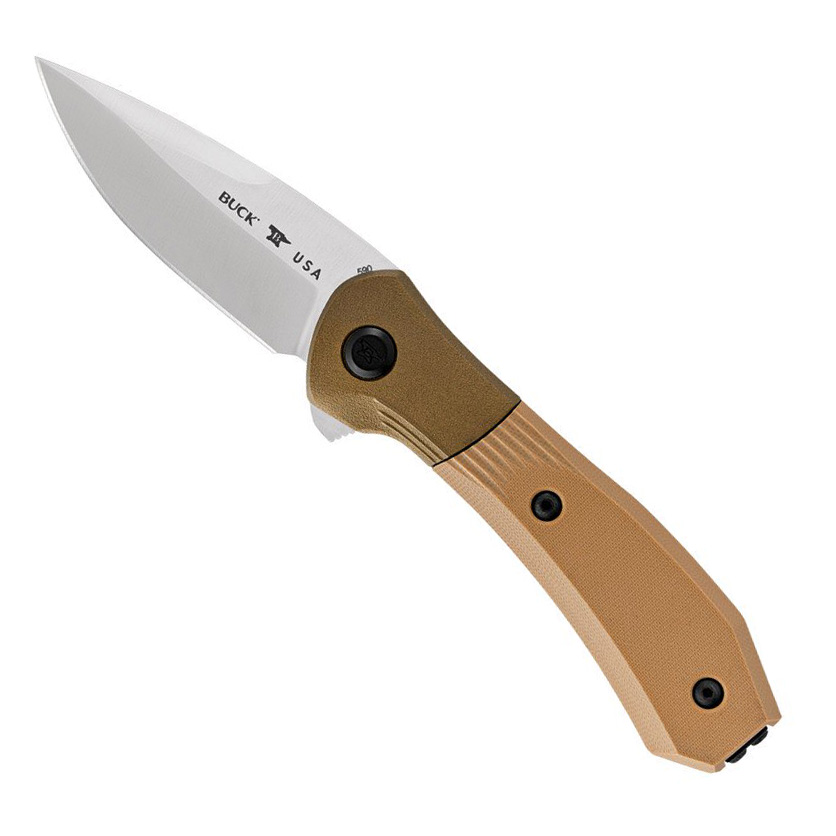Spring Assisted Knives: A Deep Dive into Different Types, Brands, and Recommendations
Posted by GT on Jul 7th 2023
I. Introduction
Welcome to our comprehensive guide aimed at helping you navigate the fascinating world of spring-assist knives. These innovative tools, often seen as a blend of manual and automatic knives, boast a unique mechanism that allows the blade to jump into action swiftly and safely at the mere push of a thumb. With their practical utility and convenient operation, they have carved a niche among outdoor enthusiasts, hobbyists, and professionals.
Understanding spring-assist knives, their different types, and the various brands that manufacture them is a crucial step toward becoming an informed user. This knowledge not only allows you to appreciate the mechanism and functionality these knives offer but also aids in making an educated choice when purchasing one. The type of spring-assist knife suitable for a camping aficionado may differ vastly from what a craftsman would prefer. Similarly, while some brands emphasize durable construction, others may prioritize sleek design or affordability.
In this article, we will unravel the complexities of spring-assist knives, delve into their varied types, and introduce some of the leading brands in the market. We will provide a glimpse into how these knives work, the pros and cons of each type, and how different brands cater to specific needs and preferences. Further, we will guide you through the critical factors to consider when choosing a spring-assist knife. As a bonus, we will discuss some legal and safety aspects and how to maintain these knives to ensure they serve you well for years.
Whether you're a seasoned knife enthusiast or a curious newcomer, this guide aims to enhance your understanding and appreciation of spring-assist knives. So, let's embark on this exciting journey together.
II. An Overview of Spring-Assist Knives
Before delving into the diverse types and brands of spring-assist knives, it's essential to grasp how these intriguing tools work and understand their key components. A spring-assist knife, also known as an assisted opening knife, operates with a mechanism that swiftly deploys the blade from a closed position once the user partially opens it manually. This hybrid functionality marries the legal and safety advantages of manual knives with the speed and convenience of automatic ones.
Let's dissect the crucial elements of a spring-assist knife:
1. Blade: The blade, the cutting part of the knife, can vary in shape, size, and material. Its design often caters to specific tasks. For instance, a clip point blade is well-suited for jobs that require precision, while a drop point blade is excellent for general-purpose cutting. The blade material, typically a type of steel, affects its durability, sharpness, corrosion resistance, and ease of sharpening.
2. Spring Mechanism: The heart of a spring-assist knife lies in its spring mechanism. This is the component that triggers the blade's rapid deployment. When the knife is closed, the spring is under tension. Once the user initiates opening the blade manually, the spring's tension releases, causing the blade to swiftly swing open.
3. Handle: When the knife is closed, the handle houses the blade and the spring mechanism. Its design is pivotal in providing a comfortable grip and enhancing control during use. The handle's material can range from metals like stainless steel or aluminum to natural materials like wood or synthetics like G-10 or FRN (Fiberglass Reinforced Nylon).
4. Locking Mechanism: Safety is paramount when dealing with sharp tools, and that's where the locking mechanism comes in. It secures the blade in the open position, preventing it from accidentally closing during use. Standard locking systems include liner lock, frame lock, and lockback, each offering different levels of safety, ease of use, and robustness.
5. Opening Mechanism: Assisted opening knives often use a flipper or thumb stud as the opening mechanism. This small protrusion on the blade allows the user to partially open the knife manually, which then triggers the spring mechanism.
By understanding these components and how they work harmoniously, you will be better equipped to appreciate the nuances among different types and brands of spring-assist knives. The following sections will explore these differences and how they can cater to varied needs and preferences.
III. Types of Spring-Assist Knives
One of the significant aspects of spring-assist knives is their diversity, which caters to a vast array of needs and preferences. This variety mainly stems from differences in size, blade type, handle material, and other factors. Understanding these differences is critical to identifying which type is best suited to your specific requirements.
1. Size: Spring-assist knives range from compact, pocket-friendly models to larger, more substantial knives. Compact knives are ideal for everyday carry, offering convenience and portability. However, they may lack the heft needed for more demanding tasks. On the other hand, larger knives provide a more substantial grip and increased cutting power but are less portable and may not be legal to carry everywhere.
2. Blade Type: The type of blade significantly influences the knife's functionality. Here are a few common blade types:
- Clip Point: Ideal for tasks requiring precision, the clip point has a well-defined point and a sharp, thin edge. It's perfect for intricate tasks and piercing.
- Drop Point: This versatile blade has a broad tip and is robust, making it great for a wide variety of tasks, including cutting, slicing, and skinning.
- Tanto: This Japanese-inspired blade excels at piercing and cutting hard materials due to its high point and flat grind.
- Serrated: Serrated blades are like small saws, excelling at cutting through hard or fibrous materials.
Each blade type has its advantages and disadvantages, and the choice largely depends on the intended use.
3. Handle Material: The handle's material affects the knife's weight, grip, durability, and aesthetic appeal. Some common handle materials include:
- Plastic: Lightweight and affordable but may lack durability and grip.
- Wood: Visually appealing with a good grip but susceptible to changes in humidity and temperature.
- Metal: Typically aluminum or stainless steel, metal handles are durable and robust but can be heavy and cold to the touch.
- Composite Materials (e.g., G-10, FRN): These synthetic materials offer a balance of lightness, durability, and grip but can be more costly.
The handle material can significantly influence how comfortable the knife feels in your hand, which can impact control and safety when using the knife.
Practical Uses of Each Type:
Different types of spring-assist knives cater to different needs:
- A compact spring-assist knife with a clip point or drop point blade and a lightweight handle is perfect for everyday carry, capable of handling most common tasks.
- For outdoor enthusiasts who may need to cut ropes or carve wood, a larger spring-assist knife with a serrated or drop-point blade and a durable handle would be ideal.
- If you're involved in heavy-duty work, a robust spring-assist knife with a tanto blade and a metal handle may serve you best.
In the next section, we will delve into the various brands that offer these diverse types of spring-assist knives, helping you make an informed purchase decision.
IV. Brands of Spring-Assist Knives
The market for spring-assist knives is replete with numerous brands, each offering unique characteristics in their designs, materials, and price points. Here, we will explore six top-tier brands manufacturing spring-assist knives, providing a glimpse into their history, product lines, and what sets each apart in terms of quality, durability, and price.
1. Kershaw: Founded in 1974, Kershaw Knives has since become a staple name in the knife industry, known for its innovative designs and high-quality materials. Kershaw spring-assist knives, such as the famous Blur and Leek models, are renowned for their reliability and performance. Kershaw offers a wide range of prices, making it accessible to knife enthusiasts with various budgets.
2. CRKT (Columbia River Knife & Tool): Established in 1994, CRKT is renowned for collaborating with famous knife designers to create innovative and functional tools. Their spring-assist knives, including the outstanding M16 series, are celebrated for their durability and unique designs. CRKT's prices are mid-range, offering excellent value for the quality.
3. Smith & Wesson: A household name in the firearm industry, Smith & Wesson has made a significant mark in the knife world. Known for their sturdy and tactical designs, Smith & Wesson spring-assist knives are reliable companions for outdoor enthusiasts and law enforcement alike. These knives are generally quite affordable.
4. Benchmade: Benchmade is a premium brand in the knife industry. Since 1988, it has been producing high-end knives with exceptional craftsmanship. Known for their AXIS Assist knives, like the popular Barrage and Mini Barrage, Benchmade offers superb quality and durability. However, their products tend to be in the higher price range.
5. Boker: Boker has a rich history dating back to the 17th century. This German company produces a vast array of knives, including high-quality spring-assist models. Boker's Magnum series is particularly well-liked for its balance of affordability and performance. Boker knives span a wide price range, from budget-friendly to high-end models.
6. Gerber: Founded in 1939, Gerber has a longstanding reputation for making reliable, innovative tools. Their spring-assist knives, like the popular Instant and Swagger models, are known for their durability and functionality. Gerber offers products at varying price points, catering to a range of budgets.
Comparing these brands, Kershaw and CRKT offer the best balance of price and quality, making them excellent choices for beginners or those on a budget. Smith & Wesson also offers affordable options with a focus on tactical designs. For those willing to invest in higher-end knives, Benchmade and specific lines of Boker and Gerber knives offer exceptional quality and craftsmanship.
In the next section, we'll provide a guide to choosing a spring-assist knife that best suits your needs, considering factors such as your budget, intended use, and preferences for size, blade type, and handle material.
V. Factors to Consider When Choosing a Spring-Assist Knife
Selecting the perfect spring-assist knife involves more than simply choosing the first appealing option or going with the most popular brand. It requires careful consideration of personal needs and preferences. This section will guide you through the process, providing insight into determining the best type and brand for your requirements.
1. Identifying Personal Needs and Preferences:
Your choice of a spring-assist knife should primarily be dictated by your specific needs and preferences. Consider the tasks you'll be using the knife for. Will it be used for everyday tasks such as opening packages or for more rugged outdoor activities like camping or hunting?
Additionally, consider your preferences in terms of size, blade type, handle material, and locking mechanism. Do you prefer a compact knife for easy portability or a larger one for better handling? What kind of blade will best serve your needs - a clip point for versatility, a tanto for heavy-duty work, or a serrated blade for cutting through tough materials?
2. Deciding on the Right Type and Brand:
Once you've identified your needs, it's easier to narrow down the type of spring-assist knife that fits those requirements. Next, you can consider the different brands that manufacture such knives.
As discussed in the previous section, brands like Kershaw and CRKT offer an outstanding balance of price and quality, making them suitable for beginners or those on a budget. If your preferences lean towards higher-end knives and budget is less of a concern, brands like Benchmade could be an excellent choice.
3. Consideration of Price, Quality, and Usage:
Price is an essential factor for most buyers. It's important to note, however, that price often correlates with quality, particularly with knives. A higher-priced knife usually boasts superior materials, craftsmanship, and durability.
Quality and durability are critical considerations if you'll be using your knife frequently or for demanding tasks. While a cheaper knife might work for infrequent, light tasks, a more expensive knife might be a more economical choice in the long run if it lasts longer and performs better.
To wrap up, choosing a spring-assist knife is a personal decision that should be influenced by your needs, preferences, and budget. Take the time to research, understand the different types and brands, and make an informed decision. This process will ensure that you find a knife that is functional and a joy to use.
VI. Top Spring-Assist Knife Recommendations
Every spring-assist knife has unique features that make it suitable for various uses. Whether you're looking for an everyday carry (EDC) tool or a knife for heavy-duty tasks, different brands offer products that might fit the bill perfectly. Here are some top recommendations based on various uses and the offerings from other brands:
1. Everyday Carry (EDC):
- Kershaw Cryo II: This is a larger version of the original Cryo, designed by Rick Hinderer. It's compact and lightweight, making it perfect for everyday carry. The stainless steel blade and frame offer durability, while the speed-safe assisted opening ensures quick and easy access.
- Benchmade Barrage: This knife boasts a versatile drop-point blade and a Valox handle, offering a balanced blend of strength and precision. The AXIS Assist mechanism allows for swift and smooth blade deployment, making it an excellent choice for everyday carry.
- CRKT Burnley Squid: This compact and sturdy knife is perfect for everyday tasks. Designed by Lucas Burnley, it combines the convenience of a compact design with the strength of a solid frame lock.
2. Heavy-Duty Tasks:
- Benchmade 495 Vector: With its robust and sharp spear-point blade, the Vector is perfect for heavy-duty tasks. The knife features an AXIS-Assist flipper mechanism, which allows for easy one-handed opening.
- Boker Kihon: Designed by Lucas Burnley, the Kihon has a robust design and durable D2 blade, making it ideal for challenging tasks. The knife also features a liner lock for safety and a flipper for easy opening.
- ProTech TR5: This automatic knife offers a swift blade deployment with a push of a button, making it handy for rigorous tasks. Its high-quality materials and excellent craftsmanship make it a durable choice.
3. Outdoor Activities:
- Gerber Highbrow: The Highbrow offers advanced features like a pivot lock mechanism and an assisted opening design, making it perfect for outdoor enthusiasts. Its compact design makes it convenient to carry on your outdoor adventures.
- Smith & Wesson Blackout OTF: This knife offers a durable and sharp blade, making it perfect for various outdoor activities. Its out-the-front (OTF) mechanism is reliable and easy to use.
- Kershaw Outlier: The Outlier is a versatile knife that's perfect for camping, hunting, and other outdoor activities. Its large blade provides excellent cutting capabilities, while the speed-safe assisted opening makes it easy to use.
4. Unique Design:
- CRKT Ritual: Designed by Alan Folts, the Ritual has a unique, appealing design with its sweeping blade and curve handle. But it's not all about looks - it's functional too. It's suitable for a variety of tasks and boasts a smooth, swift opening thanks to the IKBS ball-bearing pivot system.
Take time to explore these recommendations and find the one that resonates with your needs. Whether you're an outdoor enthusiast, a tradesperson, or someone who values the convenience of a good knife, there's a spring-assist knife out there that's perfect for you.
VII. Legal and Safety Aspects of Spring-Assist Knives
Just as important as understanding the types and brands of spring-assist knives is knowing the legal and safety aspects that come along with owning and using one. These factors are critical to ensure that you use your knife responsibly and in accordance with the law.
Legality of Owning, Carrying, and Using a Spring-Assist Knife
The legal aspects of owning, carrying, and using a spring-assist knife can vary greatly depending on your location. Some places allow the ownership and open carry of these knives, while others may have restrictions or outright bans. It's crucial to research and understand the knife laws in your locality before purchasing a spring-assist knife. Always remember that while this article provides a general overview, it does not constitute legal advice.
Basic Safety Rules when Handling a Spring-Assist Knife
Spring-assist knives, while incredibly useful, can be dangerous if not handled correctly. Here are some basic safety rules to follow:
- Always keep the blade pointed away from yourself and others when opening, closing, or using the knife.
- Never attempt to force a knife to open or close if it's stuck. This can lead to injury or damage to the knife's mechanism.
- Always ensure the knife is fully closed and locked before storing it or carrying it in your pocket.
- Never use a knife while under the influence of alcohol or drugs.
- Keep the knife out of reach of children and educate them about the dangers of knives.
VIII. Maintenance of Spring-Assist Knives
To get the most out of your spring-assist knife and ensure its longevity, regular maintenance, and proper care are essential. Not only does this keep your knife in top condition, but it also contributes to its safety.
Importance of Regular Maintenance and Proper Care
Regular cleaning and sharpening of your spring-assist knife can significantly improve its performance and lifespan. Dirt and residue can affect the spring mechanism, while a dull blade can be dangerous. Therefore, cleaning and sharpening should be part of your knife maintenance routine.
Simple Steps to Clean and Sharpen Spring-Assist Knives
Cleaning:
- First, ensure the knife is closed. Wipe down the handle with a damp cloth and mild soap if necessary.
- Open the knife and carefully clean the blade with warm water and mild soap using a soft cloth or sponge.
- Dry the knife thoroughly to prevent rust.
Sharpening:
- Hold the knife at the correct angle against the sharpening stone. This is usually around a 20-degree angle for most knives.
- Slide the blade across the stone in a sweeping motion as if you're trying to slice a thin layer off the top.
- Repeat this on both sides of the blade until it's sharp.
Remember, keeping your spring-assist knife clean and sharp not only prolongs its life but also makes it safer and more enjoyable to use.
IX. Conclusion
As we reach the end of this exploration into the realm of spring-assist knives, it's important to revisit the crucial points we've covered. Understanding the diverse types and brands of these knives, their different components, and the unique advantages each offers is foundational to making an informed decision. Whether you're leaning towards a Kershaw, CRKT, Smith & Wesson, Benchmade, Boker, or Gerber, remember to consider your specific needs and preferences.
Choosing the right knife can enhance your daily tasks, outdoor adventures, or DIY projects. However, the power to make the most of these tools lies in understanding your personal requirements. From blade type to handle material and from size to brand, each aspect has its unique significance.
While choosing the right knife is essential, equally crucial is understanding the legal implications of owning and using a spring-assist knife. Keep safety at the forefront, and remember, responsible usage is not optional but essential.
Lastly, caring for your spring-assist knife can significantly increase its lifespan and ensure its performance remains optimal. Regular cleaning and sharpening are critical aspects of maintenance.
X. Resources and Further Reading
For those keen on learning more about knives, their use, and maintenance, several valuable resources can deepen your understanding:
- American Knife and Tool Institute - A valuable resource for legal aspects related to knives.
- BladeOps - A great platform offering numerous knife models and brands.
Recommended Books:
- "Knife: The Culture, Craft and Cult of the Cook's Knife" by Tim Hayward
- "The Complete Bladesmith: Forging Your Way to Perfection" by Jim Hrisoulas
Remember, the journey with your spring-assist knife doesn't end with purchase and use. It's a path of continuous learning and mastering the art of handling these impressive tools.





